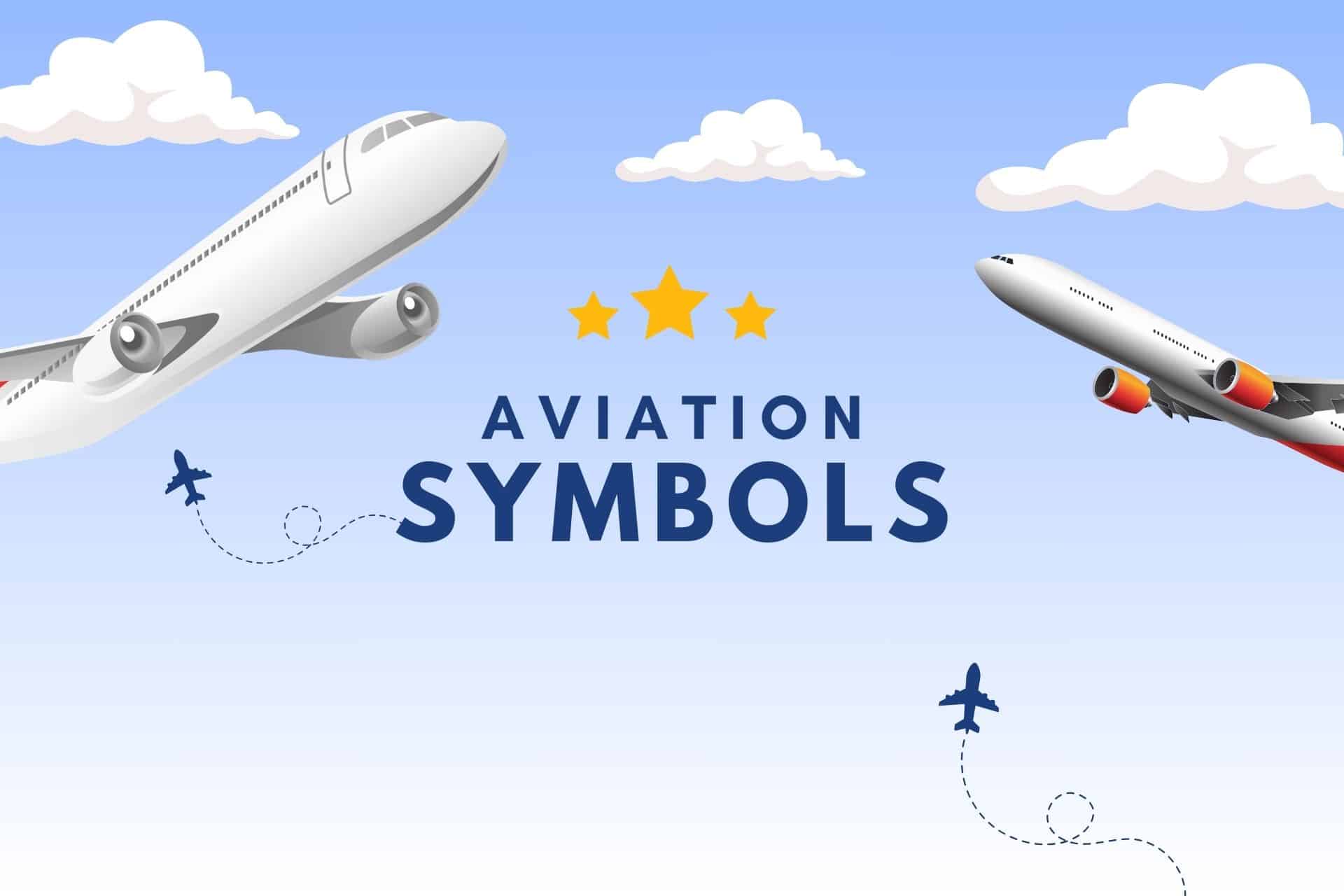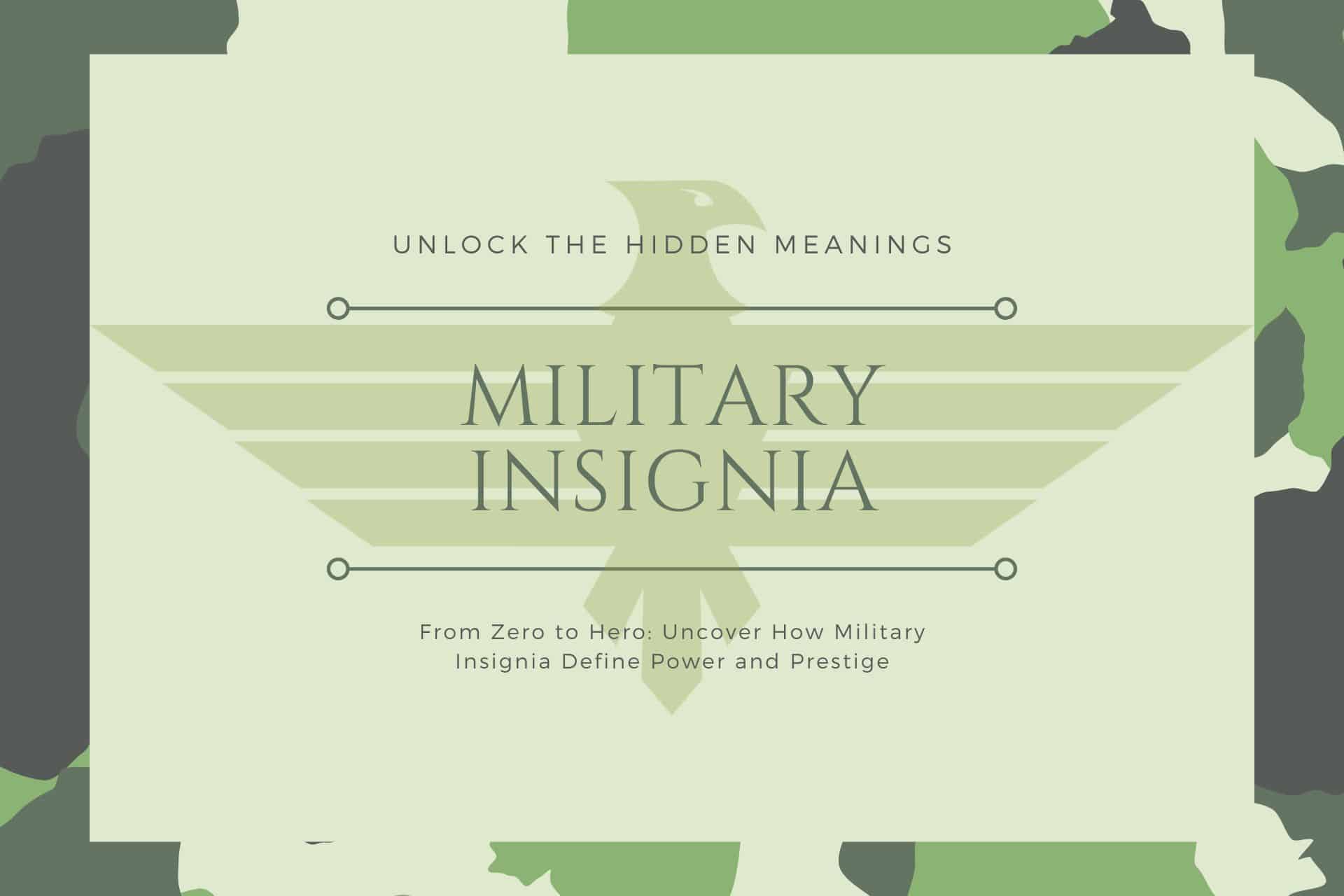Fly High with the Insider’s Guide to Sky Codes!
. Are you curious about the cryptic world of aviation symbols that guide pilots from the runway to the skies? Have you ever glanced at a cockpit’s array of switches and screens and wondered how pilots understand it?
This article demystifies the visual language of aviation—a language that ensures safety and efficiency across our skies.
Gain practical insights into the signs and symbols critical for navigation and communication in aviation.
Continue reading to uncover the fascinating secrets behind each symbol and become fluent in the language of flight.
Let’s get started!

Here’s What You Will Find

Key Takeaways
Aviation Symbols
Universal Language of Flight: Aviation symbols are a universal language standardized by organizations like the ICAO, which allows pilots and air traffic controllers worldwide to communicate effectively, ensuring safety in the skies.
Symbols of Safety and Precision: From the precise lines and numbers on runways to the intricate symbols on a pilot’s dashboard, each sign and marking is a crucial instruction in the choreography of air travel, guiding planes safely to their destinations.
A Historical Journey: The evolution of aviation symbols reflects the progress of flight itself, from rudimentary markers to sophisticated digital displays, showcasing humanity’s technological advancement and the unifying pursuit of safer air travel.
An Evolving Code: As aviation technology advances, so does the language of aviation symbols, adapting to new aircraft, navigation systems, and even the emerging world of space travel, continually ensuring clarity in an ever-expanding airspace.
What Are Aviation Symbols?
An aviation symbol is a graphical representation used in aeronautics and air navigation to convey information efficiently and effectively. These symbols are critical components of aviation communication systems, designed to transcend language barriers and provide universal understanding among pilots, air traffic controllers, and aviation personnel worldwide.
Aviation symbols include signs, markings, and icons, each with a specific meaning and function. They are used on aeronautical charts, within aircraft cockpits, at airports on runways and taxiways, and in various other contexts where clear and immediate comprehension is necessary for safety and operational efficiency.
For instance, on aeronautical charts, symbols denote airports, heliports, navigational aids, restricted airspace, and topographical features. In the cockpit, symbols are on the instrument panels and displays, providing pilots with essential information about aircraft speed, altitude, direction, and engine performance.
On the ground, airport signage and pavement markings guide pilots during taxiing, takeoff, and landing. They use universally recognized symbols to indicate directions, runway thresholds, and holding positions.
At its core, aviation is a language of symbols. These symbols fall into several categories, including airport markings, aircraft insignia, navigation aids, and air traffic control signs. They serve as the lingua franca for the aviation community, enabling seamless operation and communication in an environment where misunderstandings can have dire consequences.
Aviation symbols are not just functional; they are meticulously designed to be universally recognizable, ensuring that the runway language is the same no matter where a pilot lands.
Understanding Aviation Symbols
The Language of the Skies
The aviation industry communicates through an intricate language of symbols and signs. From the vast skies to the bustling grounds of airports, these symbols ensure the safety and efficiency of flights worldwide. Below is an exploration of the various categories of aviation symbols which form the airspace alphabet.
Aeronautical Chart Symbols
Navigating the Unseen Highways
Aeronautical charts are laced with crucial symbols for navigation and safety. These symbols provide information on airports, navigational aids like VOR stations, airspace classifications dictating flight rules within certain areas, and topographical features essential for visual flying. Understanding these symbols is akin to reading a map that guides pilots through the invisible highways in the sky.
Runway and Taxiway Markings
The Ground Language of Aviation
The tarmac speaks through symbols and markings. Runway numbers correlate to magnetic headings, aiding pilots in orientation. Centerlines keep the aircraft aligned while holding positions marked where an aircraft should stop to ensure it doesn’t interfere with active runways.
Taxiway paths, differentiated by continuous and dashed lines, lead aircraft to and from parking areas, akin to roads in a city designed exclusively for planes.
Air Traffic Control Symbols
Orchestrating Flights from the Ground
Radar displays in air traffic control are a symphony of symbols representing an aircraft’s motion, altitude, and flight path. These symbols enable controllers to guide pilots through the controlled chaos of crowded airspace, preventing conflicts and ensuring that each aircraft reaches its destination safely.
Aircraft Instrument Symbols
The Pilot’s Palette
Inside the cockpit, pilots are greeted by a constellation of instrument symbols. These include speed indicators, altitude indicators, heading indicators, and a host of engine gauges, each providing vital information at a glance. Like the gauges on a car’s dashboard, these symbols are the language through which the aircraft speaks to its commander.
Airport Signage
The Signposts of the Skyports
Airports utilize a series of signs and symbols that provide direction and information. Runway identifiers allow pilots to verify they’re on the correct path, distance markers provide spatial awareness, and directional signs keep aircraft moving to their proper positions. These signs ensure that the airport operates smoothly and safely.
Aircraft Warning Lights
Beacons of Safety
Warning lights serve as critical indicators of presence and height. On buildings and towers, they warn pilots of obstacles, while on aircraft, they enhance visibility to other aircraft, particularly during night or in poor weather conditions.
Weather Map Symbols
Forecasting Flight Conditions
Weather maps’ symbols succinctly communicate vast amounts of meteorological information, indicating fronts, pressure systems, and various forms of precipitation. These symbols allow pilots and dispatchers to understand and anticipate weather conditions critical for flight planning and safety.
Navigation Symbols
Guiding Flights Home
Symbols for VORs, NDBs, and ILS systems are the guiding stars for pilots, enabling precise navigation regardless of visibility. These electronic aids have symbols associated with them on charts. In the cockpits, they correspond to displays that guide the pilot along invisible pathways that have been charted in the sky.
Airline and Aircraft Tail Codes
Identifying the Fliers
Every airline has a unique symbol or tail code, making it instantly recognizable. Aircraft also bear registration codes, often on the tail, which indicate their country of origin and unique identification number, similar to a car’s license plate.
Flight Plan Symbols
Charting the Course
Symbols in flight planning represent waypoints, airways, restricted areas, and no-fly zones. They are the language of a flight plan, indicating an aircraft’s intended path and highlighting any areas of concern or particular interest.
Aircraft Schematic Symbols
The Blueprint Language
Maintenance manuals and aircraft blueprints are rich with schematic symbols, each representing different parts and systems of an aircraft. These symbols allow engineers and maintenance personnel to speak the aircraft’s language, understand its inner workings, and ensure its airworthiness.
Emergency and Safety Symbols
Paths to Protection
Symbols indicating emergency exits and equipment universally convey the message of safety. In an emergency, these symbols direct passengers to exits and equipment on an aircraft, providing clear, unambiguous directions when needed most.
International Civil Aviation Organization (ICAO) Symbols
Universal Air Language
The ICAO has standardized a set of symbols used worldwide to avoid confusion and enhance safety. These symbols cover various aviation-related applications, from airport markings to air navigation.
Airspace Symbols
The Boundaries Above
Aeronautical charts represent different types of airspace—controlled, uncontrolled, restricted, and dangerous areas—with their own rules and regulations. These symbols help pilots understand the invisible boundaries they navigate through.
Flight Information Regions (FIRs) Symbols
Controlling the Sky Patches
FIR symbols demarcate specific regions of airspace controlled by a particular air traffic control center. They are the division of international airspace that ensures efficient and safe flight management.
Altitude and Speed Symbols
The Metrics of Flight
Altitude symbols, such as FL (flight level) and AGL (above ground level), and speed indicators like knots and Mach numbers are the standard measurements in aviation. They dictate how high and fast an aircraft travels.
Weather Symbols
Icons of the Atmosphere
In aviation forecasts, these symbols depict meteorological phenomena like fog, thunderstorms, or icing conditions. Pilots must evaluate en-route weather conditions and make necessary adjustments.
Communication Symbols
Dialogues in the Air
Symbols used in communication represent the frequencies and methods by which pilots and air traffic controllers converse. They ensure that this dialogue remains uninterrupted, which is necessary for the safe operation of flights.
Incorporating these categories into the broader conversation on aviation symbols, we appreciate these visual tools’ complexity and critical nature. These categories represent the various dialects of the same language, coalescing into the rich tapestry of aviation communication.
Organizations Regulating Aviation Symbols
The Guardians of the Skies
In aviation, the order is maintained by a tapestry of symbols, each crafted to provide clarity and ensure air travel safety. Key organizations uphold this intricate system, which guardians the use of aviation symbols globally.
International Civil Aviation Organization (ICAO)
The International Civil Aviation Organization (ICAO), a specialized agency of the United Nations, is at the forefront of standardization. Established in 1944 through the Convention on International Civil Aviation, also known as the Chicago Convention, the ICAO is the primary authority for aviation standards, including regulating aviation symbols.
The ICAO’s mission is to foster the planning and development of international air transport to ensure safe and orderly growth. To this end, the organization has established annexes to the Chicago Convention that outline Standards and Recommended Practices (SARPs). These SARPs cover all aspects of aviation, including the symbols used in air navigation charts, airport runways, and aircraft cockpits.
Federal Aviation Administration (FAA)
The Federal Aviation Administration (FAA) oversees all aspects of American civil aviation in the United States. The FAA adopts many of the standards set forth by the ICAO and further develops regulations and procedures to address the specific needs of the National Airspace System (NAS). This includes detailed specifications for aviation symbols in all signage, markings, and electronic displays.
European Union Aviation Safety Agency (EASA)
For European skies, the European Union Aviation Safety Agency (EASA) is responsible for civil aviation safety. EASA works closely with the ICAO and its member states to harmonize regulations, including those concerning aviation symbols. They ensure that the member states’ symbols and markings comply with international standards and regional requirements.
National Aviation Authorities (NAAs)
Each country has its own National Aviation Authority (NAA), responsible for regulating aviation within its borders. These authorities ensure that aviation symbols used in their countries conform to the standards set by the ICAO while also implementing their own regulations as necessary. The NAAs are integral to the global network and maintain consistency in aviation symbology.
Joint Aviation Authorities (JAA)
Before the establishment of EASA, the Joint Aviation Authorities (JAA) was a cooperative body of European civil aviation regulatory authorities. The JAA played a significant role in developing joint safety regulations related to aviation symbols. Though EASA has largely assumed its functions, the JAA’s legacy remains in the standards and practices in place today.
Other Regulatory Bodies and Industry Groups
Various other regulatory bodies and industry groups contribute to developing and regulating aviation symbols. These include the International Air Transport Association (IATA), which represents airlines worldwide, and the Civil Air Navigation Services Organization (CANSO), which means Air Navigation Service Providers (ANSPs).
Together, these organizations form a global regulatory framework that ensures clear communication and operational efficiency, which are vital to international air transport’s safety and regularity. They maintain the standards that make aviation symbols a universal language capable of being read and understood by aviation professionals worldwide.
Examples of Common Aviation Symbols
Deciphering the Code
Understanding the markings and symbols on runways and aircraft can seem like deciphering an ancient code. Yet, each mark, each light, and each sign has a distinct purpose, guiding pilots during takeoff, landing, and taxiing.
- Runway Markings: Runways are adorned with numbers and letters at each end, indicating the runway’s magnetic bearing rounded to the nearest ten degrees. The colors of the lights and painted lines—white for runway boundaries and yellow for taxiways—serve as a visual language for pilots, especially under the veil of night or the glare of harsh weather.
- Understanding Airport Signage: Airports are a maze of taxiways and aprons, each with its own set of signs. Black signs with yellow letters provide directions, while red signs warn of critical areas or no-entry zones. These symbols are designed for clarity and instant recognition, as there’s little room for hesitation on an airport’s bustling grounds.
- Aircraft Symbols and Decals: Beyond the airline logos that grace the fuselage, aircraft are covered in symbols that communicate essential information. These include arrows and outlines around emergency exits, ensuring that there’s no confusion about where to go in the chaos of an emergency. Even the seemingly decorative stripes on an airplane’s wings serve a purpose, indicating safe walk areas for ground crew.
History and Evolution of Aviation Symbols
The history of aviation symbols is as storied as the history of flight. It begins with the earliest days of aviation when the skies were a new frontier. Like the Wright brothers, the pioneers of flight quickly realized the necessity for a set of standardized visual cues. These first symbols were simple and functional, conveying basic information such as wind direction and landing strip locations.
Air navigation became more complex as aircraft capabilities advanced, flying longer distances and carrying more passengers. The interwar period and the years following World War II saw a significant expansion in commercial air travel.
This boom necessitated a more comprehensive system of symbols to manage the growing number of flights efficiently and to enhance safety. Runway markings became more complex, incorporating numbers and letters to indicate directions and locations. This era also saw the introduction of colored lights and beacons, serving as nocturnal guides for pilots.
Establishing the ICAO in 1947 marked a pivotal moment in the evolution of aviation symbols. As the skies became ever more crowded, international standardization was urgently needed. The ICAO codified symbols for everything from airport markings to navigational aids, ensuring that a pilot trained in one nation could understand the signage and instruments of an aircraft or airport in another.
National bodies like the FAA in the United States worked to implement these standards simultaneously, adapting and evolving them to meet domestic aviation’s needs while remaining aligned with international norms.
The jet age and the introduction of radar further revolutionized aviation symbols. Radar screens needed symbols representing aircraft in flight, creating blips and sweeps that are still part of air traffic control today.
The advent of computer technology and the digital age brought about the next great leap in the evolution of aviation symbols. Digital displays replaced analog dials in cockpits, with them came new symbols and icons. Glass cockpit displays now show aircraft attitude, navigation, and engine readings using sophisticated symbols that provide pilots with real-time, intuitive information.
Today, aviation symbols continue to evolve, incorporating advanced technologies such as GPS and ADS-B (Automatic Dependent Surveillance–Broadcast), which offer greater accuracy and real-time data. New symbols are being developed to accommodate innovations like unmanned aerial vehicles (UAVs) and space tourism, ensuring that aviation symbols remain a crucial and ever-adapting language of the skies.
Why Are Aviation Symbols Important?
The importance of aviation symbols cannot be overstated. They are the linchpins of safety, allowing aircraft to move precisely in environments where timing and position are critical. In an industry where seconds matter, these symbols provide the clarity needed to avoid accidents.
Moreover, aviation symbols contribute to the efficiency of global travel. Standardized symbols allow pilots and air traffic controllers worldwide to speak the same visual language, making international flights smoother and reducing the risk of misunderstandings.
Finally, these symbols play a crucial role in aviation education and training. Learning the language of aviation symbols is one of the first steps for pilots, air traffic controllers, and ground personnel, and it forms the foundation for safe and efficient air travel.
The Future of Aviation Symbols
As technology advances, so too does the potential for new aviation symbols. Innovations in aircraft design, air traffic control systems, and navigation tools continually push the boundaries of what’s possible in aviation. The challenge lies in evolving these symbols to meet future needs while ensuring they remain universally understood.
The advent of virtual reality (VR) and augmented reality (AR) technology offers exciting possibilities for the future of aviation symbols. These technologies could revolutionize how pilots and air traffic controllers are trained, providing immersive environments to learn and practice interpreting and using these symbols.
FAQs: Answering Your Questions
What do the different colors of lights on the runway mean?
The colors of runway lights are standardized: white lights delineate the runway’s edges, blue lights mark the taxiways, and green lights indicate the start of the runway.
How are new aviation symbols created and approved?
International bodies like the ICAO typically develop new aviation symbols in collaboration with experts and stakeholders. Approval involves rigorous testing and consensus-building among member states.
Can the general public learn to understand aviation symbols?
The general public can learn the basics of aviation symbols through various online resources, aviation museums, and flight simulators. A deeper understanding usually comes from formal education and training in aviation.
In sharing this journey through the world of aviation symbols, I hope you’ve gained a newfound appreciation for the intricate language that keeps our skies safe. Who knows, the next time you gaze out an airplane window, you might just find yourself decoding the runway markings below.
Last Thoughts
Aviation symbols are the silent sentinels of the sky, guiding pilots, air traffic controllers, and ground personnel through the complex ballet of air travel. As we’ve explored the vast array of symbols that populate airports and aircraft, it’s clear that these symbols are more than mere markings; they are the lifeblood of aviation safety and efficiency.
As technology advances, so will the language of aviation, which continues to evolve in step with the needs of this dynamic industry.
Before You Go
If you’ve found this journey through the language of the skies fascinating, consider sharing this article with others. Whether they’re avid flyers, enthusiasts of the intricate world of aviation, or simply curious minds eager to learn about the symbols that orchestrate our global air traffic, this content will elevate their understanding.
Spread the knowledge, and you might inspire someone to look up and see planes and the complex and beautiful network of symbols that keep them aloft. After all, the sky is not the limit—it’s a canvas of codes waiting to be deciphered, and each share is a ripple that widens the circle of learning and appreciation for aviation.
More on Aviation Symbols
- Aeronautical Chart Symbols
- Runway and Taxiway Markings
- Air Traffic Control Symbols
- Aircraft Instrument Symbols
- Airport Signage
- Aircraft Warning Lights
- Weather Map Symbols
- Navigation Symbols
- Airline and Aircraft Tail Codes
- Flight Plan Symbols
- Aircraft Schematic Symbols
- Emergency and Safety Symbols
- International Civil Aviation Organization (ICAO) Symbols
- Airspace Symbols
- Flight Information Regions (FIRs) Symbols
- Altitude and Speed Symbols
- Weather Symbols
- Communication Symbols
More on Symbols
History of Symbols: How Ancient Marks Shape Our Modern World!
From Cave Walls to Emojis—A Journey Through Time Have you ever wondered about the history of symbols? Maybe you’ve wondered about their global variations or how they’ve shaped our world. Prepare to have your curiosity …
Check it Out!Tattoos and Their Secret Powers: How Ink Can Change Your Life!
Exploring the Art, Meaning, and Culture of Ink! Are you intrigued by tattoos? Are you curious about the stories they tell and the intricate details they contain? Look no further. You might be wondering about …
Check it Out!Masonic Symbols Unlocked: Discover the Secret Meanings Behind the World’s Most Mysterious Icons!
The Hidden Powers and Ancient Secrets You Never Knew! Are you intrigued by masonic symbols and their profound meanings? Perhaps you’ve seen the square, compasses, or the all-seeing eye and wondered about their significance? Thankfully, …
Check it Out!Military Insignia: Unlock the Hidden Meanings Behind These Powerful Symbols
From Zero to Hero: Uncover How Military Insignia Define Power and Prestige Are you curious about the meaning behind military insignia or rank emblems? Have you ever wondered about their significance or history? This comprehensive …
Check it Out!More Symbols

















